Discover 9 hidden attractions, cool sights, and unusual things to do in Sharpsburg (United States). Don't miss out on these must-see attractions: Burnside's Bridge, Tolson's Chapel and School, and Kennedy Farmhouse. Also, be sure to include William Chapline House in your itinerary.
Below, you can find the list of the most amazing places you should visit in Sharpsburg (Maryland).
Table of Contents
Burnside's Bridge

Bridge in the Washington County, Maryland. Burnside's Bridge is a landmark on the Civil War Antietam National Battlefield near Sharpsburg, northwestern Maryland.[1]
Address: Antietam National Battlefield, 21782 Sharpsburg
Tolson's Chapel and School

Historical landmark in Sharpsburg, Maryland. Tolson's Chapel and School is a historic African American church located at Sharpsburg, Washington County, Maryland, United States. It was built in 1866 and served as a church and a Freedmen's Bureau school for black residents of Sharpsburg in the years following the American Civil War. It was listed on the National Register of Historic Places in 2008, and was designated a National Historic Landmark in 2021.[2]
Kennedy Farmhouse
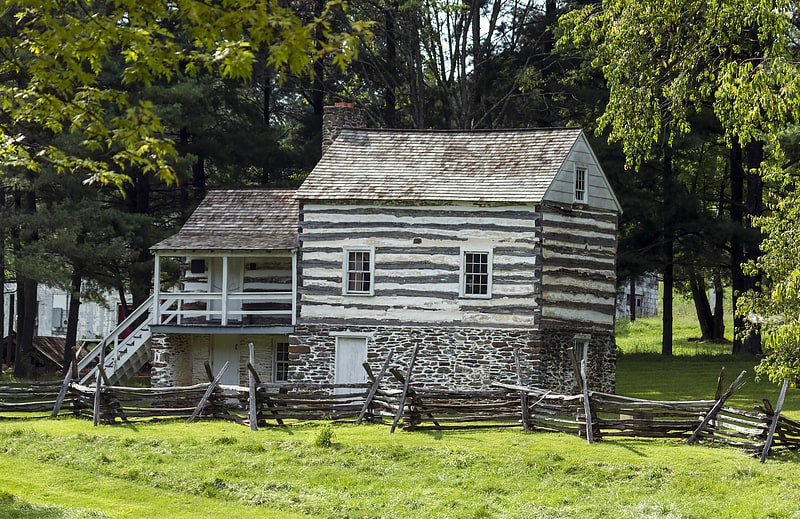
Building. The Kennedy Farm is a National Historic Landmark property on Chestnut Grove Road in rural southern Washington County, Maryland. It is notable as the place where the radical abolitionist John Brown planned and began his raid on Harpers Ferry, Virginia, in 1859. Also known as the John Brown Raid Headquarters and Kennedy Farmhouse, the log, stone, and brick building has been restored to its appearance at the time of the raid. The farm is now owned by a preservation nonprofit.[3]
Address: 2406 Chestnut Grove Rd, 21782-2113 Sharpsburg
William Chapline House

Historical landmark in Sharpsburg, Maryland. The William Chapline House in Sharpsburg, Maryland, United States is a large stone house built about 1790. The house has shaped stonework at the front and rubble stonework on the sides with a cast-iron porch added around the turn of the twentieth century. The house was damaged during the Battle of Antietam, when it was hit with canister shot. At that time it was occupied by Dr. Augustin A. Biggs, who treated the wounded from the battle in the house.
William Chapline House was listed on the National Register of Historic Places in 1976.[4]
Address: 109 W Main Street, Sharpsburg
Jacob Highbarger House
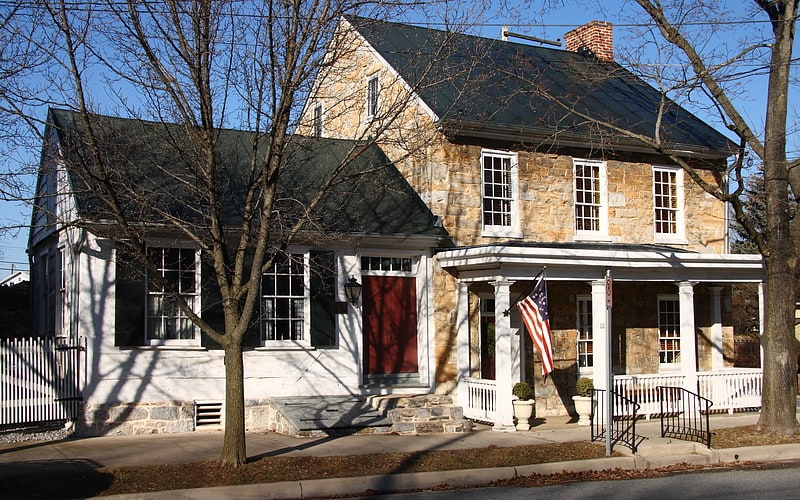
Historical landmark in Sharpsburg, Maryland. The Jacob Highbarger House was built circa 1832 in Sharpsburg, Maryland, United States. The Greek Revival-influenced house is a late example of limestone construction in the Cumberland Valley of Maryland, with an attached log workshop. The log structure is an unusual example of corner-post log construction with diagonal bracing.
It was listed on the National Register of Historic Places in 2002.[5]
Good-Reilly House
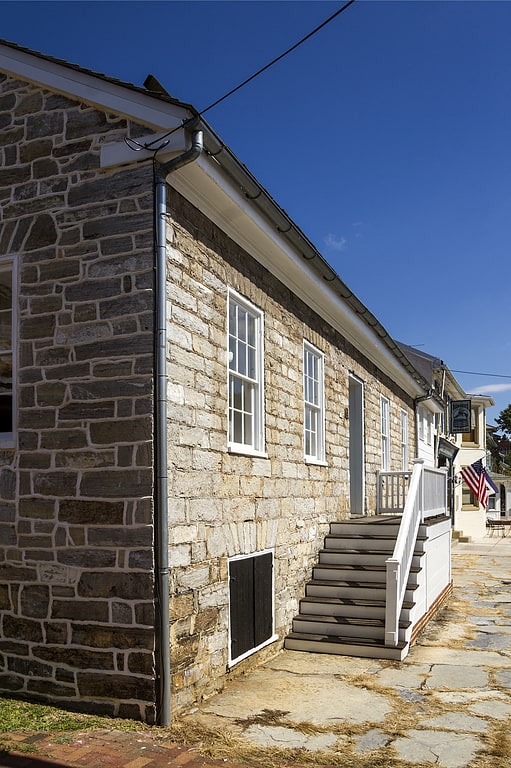
Historical landmark in Sharpsburg, Maryland. The Good-Reilly House is a historic home located at Sharpsburg, Washington County, Maryland, United States. It is located at the northeast corner of the town square and is a 1+1⁄2-story stone house with combined Maryland colonial and Georgian stylistic influence. The house likely dates from the 1780s, and features flush stone chimneys on each gable end.
The Good-Reilly House was listed on the National Register of Historic Places in 2002.[6]
Joseph C. Hays House
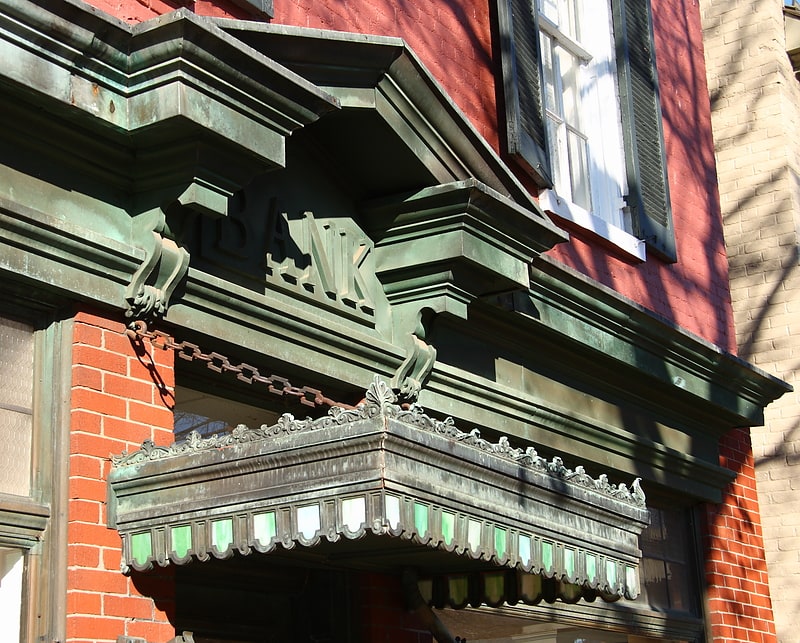
Historical landmark in Sharpsburg, Maryland. The Joseph C. Hays House at 103-105 West Main Street in Sharpsburg, Maryland, United States was originally built in 1823 as a three-bay side hall double-parlor house in the Federal style. It was soon expanded to the east with a two-bay parlor and one commercial bay. The east parlor entered commercial use during the mid-19th century as a dry goods store operated by Benjamin F. Cronise. Circa 1920 a storefront was added and a copper front was applied with BANK lettered under a central pediment, behind a marquee.
The property combines early 19th century Federal architecture with a good example of early 20th century commercial architectural ornament.
It was listed on the National Register of Historic Places in 2006.[7]
Piper House
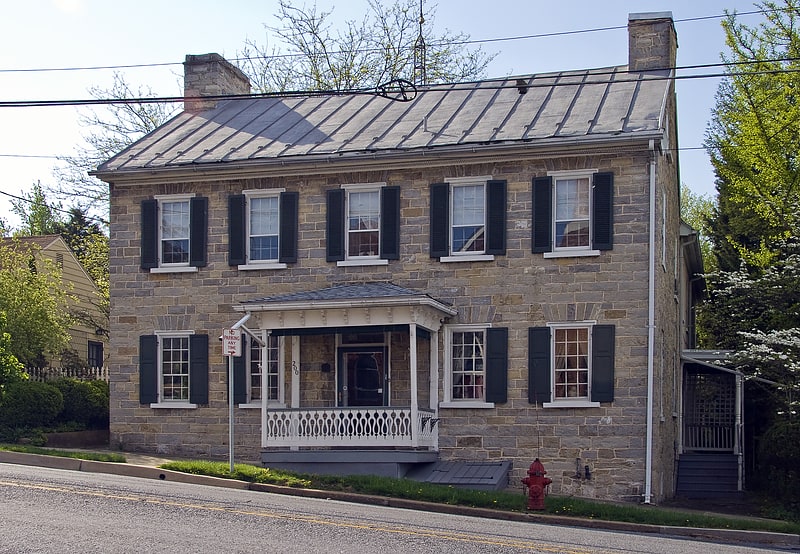
Historical landmark in Sharpsburg, Maryland. The Piper House is a historic home located at the southeast corner of Main and Church Streets in Sharpsburg, Washington County, Maryland, United States. It has a two-story limestone main block, constructed between 1792 and 1804, with a two-story brick wing, added about 1834. The house features a hip-roofed porch that shelters the main central entrance.
The Piper House was listed on the National Register of Historic Places in 1999.[8]
Antietam Iron Furnace Site and Antietam Village
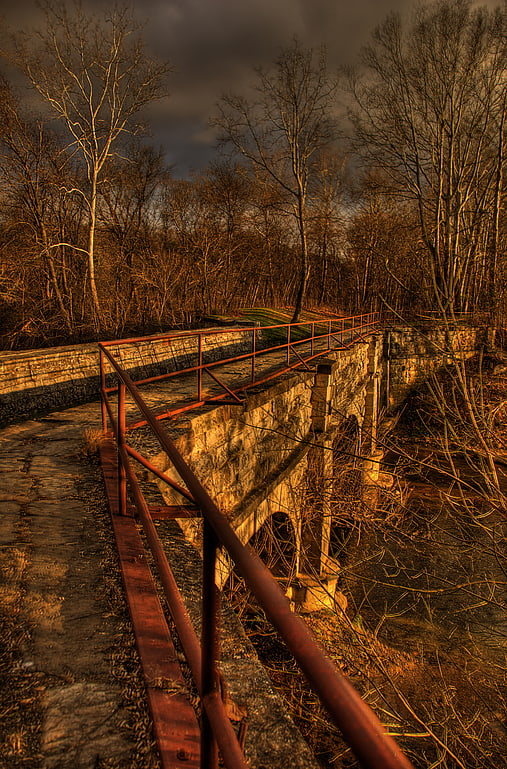
Antietam Iron Furnace Site and Antietam Village is a national historic district at Antietam, Washington County, Maryland, United States. It consists of the remains of a mid-18th to late-19th century iron furnace site, and the nearby related village. Remnants of the ironworks include a dam and race, a possible wheel pit or building foundation, the possible location of a furnace stack, and a four-arch stone bridge built by John Weaver in 1832. Also at the site are the dozen or so brick, stone, and wood houses comprising Antietam Village. Typical of the houses is the Mentzer house, a four-bay, two-storey stone structure of roughly coursed fieldstone, painted white.
The district was added to the National Register of Historic Places in 1975.[9]